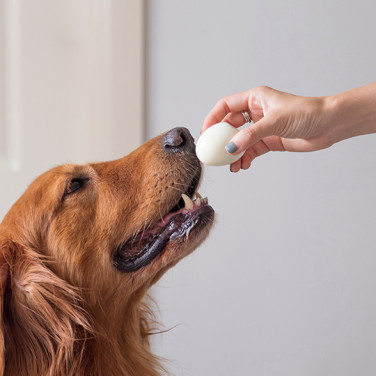DISEASES
Anorexia in Dogs - Why Do Dogs Lose Their Appetite?
페이지 정보
본문
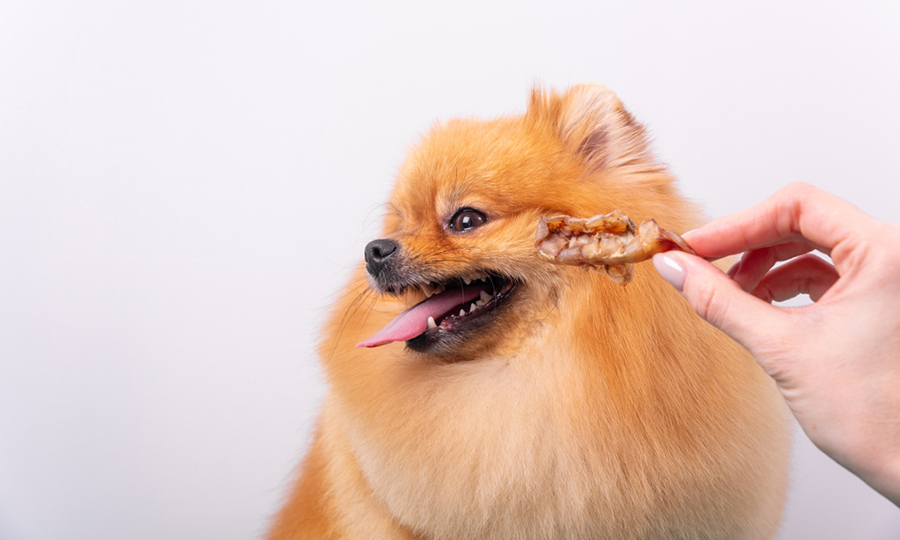
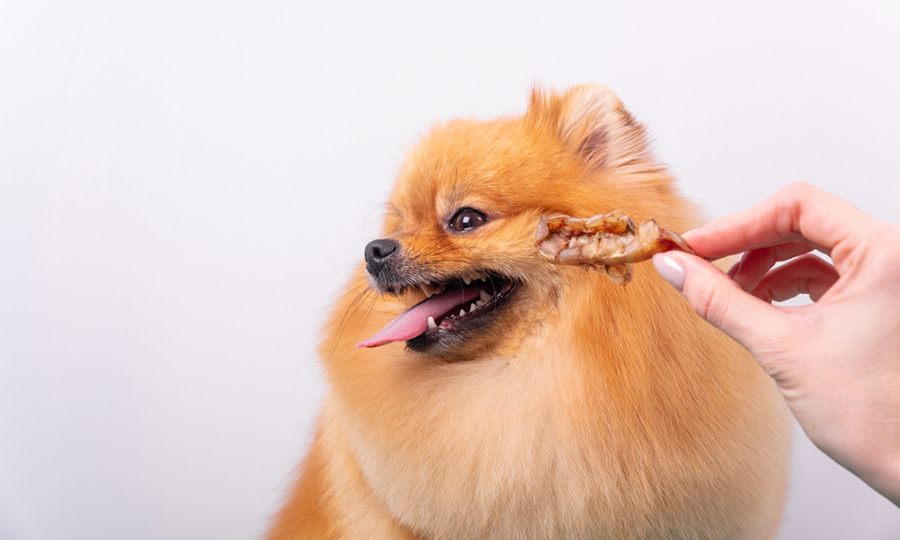
What is inappetence in dogs or dog anorexia?
Anorexia in dogs is a condition characterized by a lack of appetite and a decreased or complete refusal to eat. Anorexia can be categorized as either true anorexia or pseudo-anorexia. Pseudo-anorexia occurs when a dog has an appetite and desires to eat but cannot chew or swallow food due to factors such as periodontitis or jaw pain. Regardless of the underlying cause, a dog’s loss of appetite or reduced food intake can be indicative of a serious health problem.
Reduced appetite can have various causes and is often a symptom that accompanies many diseases, which makes diagnosing and treating the exact cause quite complicated. If anorexia persists for an extended period, it is crucial to visit a veterinary hospital to determine the cause and begin proper treatment.
Causes of anorexia in dogs
There are many causes of anorexia in dogs, and it is important to differentiate between true anorexia, which is characterized by a lack of desire for real food, and pseudo-anorexia, which is the inability to consume food due to other factors.
Factors that can cause true anorexia include:
- Systemic disease, infection, or organ failure
- Psychological factors such as stress or environmental changes
- Toxicosis or symptom of poisoning
- Immune system abnormalities
- Loss of smell
- Tumor
- Gastrointestinal obstruction
- Ulcers or inflammation of digestive organs
- Nausea
- Fever
- Reaction to medication
Factors that can cause pseudo-anorexia include:
- Inflammation that causes pain in the mouth and esophagus, such as stomatitis, periodontitis, gingivitis, and esophagitis
- Pain in masticatory muscles (muscles used for chewing)
- Jaw joint pain
- Salivary gland disease
- Damage to nerves that affect chewing and swallowing
- Oral tumors
Symptoms accompanying anorexia in dogs
Anorexia and loss of appetite in dogs are non-specific symptoms that can be caused by various factors as described above. These symptoms may be accompanied by vomiting, diarrhea, and bloody stool. Additionally, other symptoms such as bleeding in the mouth or bad breath may occur simultaneously depending on the underlying cause.
When should I worry about my dog not eating?
If your dog was eating normally and suddenly refuses food or loses its appetite, it may be a signal that your dog has an underlying health problem. Therefore, it is recommended that you visit a veterinary hospital to find out the cause. Long-term anorexia or anorexia in dogs can lead to weight loss and other health problems. In severe cases, it can be life-threatening. Caution is needed because fatty liver disease can occur if anorexia persists for a period. If your dog does not drink water along with anorexia or loss of appetite, your dog is at risk of dehydration as well.
In the following cases, it is recommended that you visit the hospital for an accurate examination as soon as possible.
- Accompanied by digestive symptoms such as vomiting, diarrhea, and bloody stool.
- If your puppy is young, seek veterinary care immediately.
- When the pupil is dilated or there are signs of pain when touched in certain areas. This may indicate a serious medical condition and requires immediate attention.
- When the gums turn pale or white, or there are symptoms of dehydration, it is important to seek veterinary care as soon as possible.
How to deal with anorexia in dogs at home
If your dog's anorexia or food refusal continues, you can try a variety of ways to increase its appetite. Beginning with consistently checking your dog’s appetite with their favorite snacks and monitoring the amount of water they drink.
Changing dog food
Make sure dog food is not stale and try to provide fresh food if possible. You can also try switching your dog's diet to a different protein source. Additionally, it may be a good idea to add some water or sodium-free chicken or beef broth to your dog food bowl and let it soak for a few minutes before serving. Serving canned dog food slightly warmed up can also help encourage their appetite.
Changing your dog’s eating environment
You can offer meals in a new, more comfortable environment or change their food bowl. Puppies are more interested in new foods, so if they don't eat, it's best to remove their dog bowl right away and offer it again later.
Exercise and walks
Increased activity through exercise, play, or walking may help increase appetite.
Diagnosing anorexia in dogs
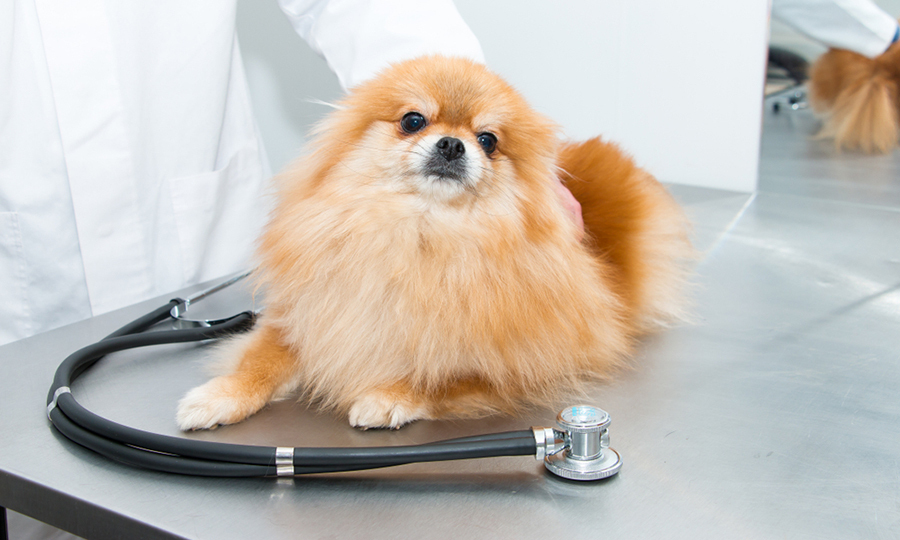
Due to the numerous causes of anorexia in dogs, identifying the root cause can be a process that involves several tests. During a veterinary visit for loss of appetite, a veterinarian will ask questions about the timing and duration of the symptoms, any accompanying symptoms, and if there has been any weight loss to gather as much relevant information to accurately diagnose anorexia.
According to the answers to the veterinarian's questions, the following tests will be conducted to determine the exact cause:
-
Oral exam
A veterinarian will check your dog’s oral health for any problems such as periodontitis and gum inflammation.
-
Blood test
Tests such as CBC and blood chemistry can be performed by collecting blood samples. These tests can help determine infection and inflammatory responses and evaluate the conditions of a dog’s liver, kidneys, pancreas, blood sugar, and electrolyte balance.
-
X-rays
X-rays can check for obstruction or foreign matter in the digestive tract and check the overall condition of various organs.
-
Abdominal ultrasound
Organs in the abdominal cavity, such as the liver, small intestine, pancreas, and kidneys, can be evaluated.
-
CT scan
A CT scan is used to check for tumors and other potential problems in the body.
-
Endoscopy
From the mouth to the esophagus, stomach, and duodenum, a veterinarian can get a closer look inside and evaluate their condition.
Treatments for anorexia in dogs
Depending on the cause of your dog's anorexia or loss of appetite, the treatment process will vary.
-
Antibiotics and pain relievers
Antibiotics and anti-inflammatory drugs may be prescribed if anorexia is caused by an infection or inflammation, and pain relievers may be prescribed if anorexia due to oral pain or other signs of pain is present.
-
Fluid therapy
If your dog has any issues with their kidneys or pancreas, fluid therapy can be administered.
-
Chemotherapy or surgical intervention
Surgical removal or chemotherapy may be considered for the presence of tumors. It may also be necessary to manage additional symptoms caused by anorexia.
-
Other treatments
For example, if dehydration is present, intravenous injections can correct it. If your dog is severely malnourished due to anorexia, feeding can be done through a tube.
Appetite stimulants such as Cyproheptadine and Mirtazapine may also be considered if anorexia persists.
As such, the treatment process for anorexia and loss of appetite is completely different depending on the cause, and the prognosis may also differ.
Prevention of anorexia in dogs
To prevent anorexia or the loss of appetite in dogs, it is necessary to manage their regular food and water intake. Always ensure that fresh water and food are available to them. It's important to provide the right amount of food because overindulgence in treats or human food can cause a loss of interest in their regular meals down the line.
Find out more about your dog’s symptoms and diseases on the Buddydoc app!
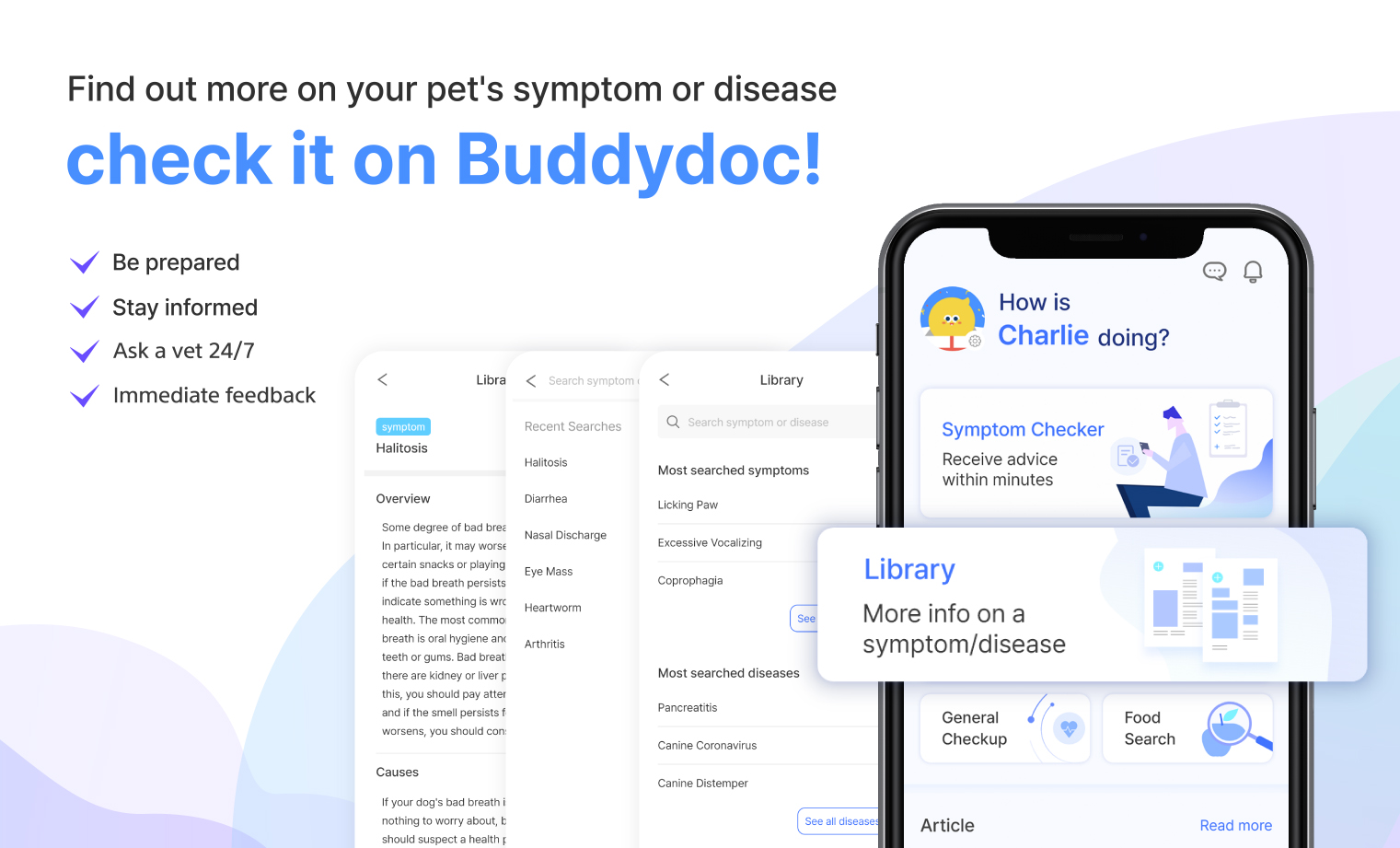
The Buddydoc library is filled with everything you’d want to know about each symptom and disease your pet may experience. If you would like to find out more about the causes, signs, treatments, preventions, and more for your dog’s disease. Try out the Buddydoc app and search for your pet’s symptoms or diseases in the Buddydoc library.




